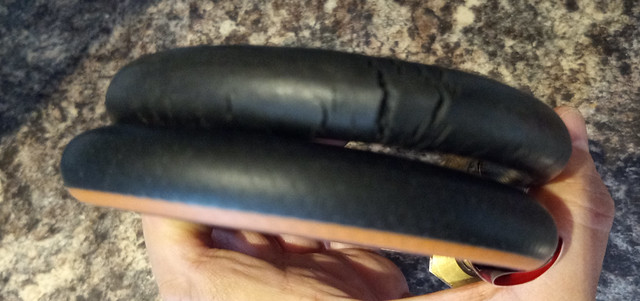Canalsman
Full Member
- Posts
- 5,469
- Likes
- 6,134
I've spent the past couple of weeks chasing a small gas leak in the gas locker emanating from my two GasIt refillables.
I emptied and then disconnected one cylinder and then removed tee-pieces to revert to a single cylinder installation. I wanted to reduce the number of connections to the minimum.
In addition I purchased an electronic gas leak detector like this:
This works very well and confirmed that the leak was in the vicinity of the regulator. Despite renewing the hose from cylinder to regulator and fitting new washers the leak persisted.
I consulted a dealer in Seixal, Portugal, yesterday and purchased the hose and washers from them.
I returned today at 10am to see if they could swap the regulator for me. This seemed to be the cause of the problem. They were most helpful and I returned at 3pm. Upon removal the regulator showed clear signs of being full of oil carried in the LPG. This is excusable after 17 years I think...
The new regulator was fitted very quickly and the gas leak has been banished.
So it's worth bearing this problem in mind if the regulator in your vehicle is a little elderly...
Yet again it was proven that getting things fixed on a motorhome is quick and straightforward in Europe. I have prior experience in France and Spain to back this up. It's not like the UK where you're likely to have wait for a couple of months to be fitted in!
Even better it was cheap. Total cost fitted 63€!!
Labour rate at the dealer was an amazing 43€ per hour!
If you're in Portugal and need help I can recommend highly Solvana Motorhomes:

 maps.app.goo.gl
maps.app.goo.gl
The proprietor speaks almost perfect English too...
I emptied and then disconnected one cylinder and then removed tee-pieces to revert to a single cylinder installation. I wanted to reduce the number of connections to the minimum.
In addition I purchased an electronic gas leak detector like this:
This works very well and confirmed that the leak was in the vicinity of the regulator. Despite renewing the hose from cylinder to regulator and fitting new washers the leak persisted.
I consulted a dealer in Seixal, Portugal, yesterday and purchased the hose and washers from them.
I returned today at 10am to see if they could swap the regulator for me. This seemed to be the cause of the problem. They were most helpful and I returned at 3pm. Upon removal the regulator showed clear signs of being full of oil carried in the LPG. This is excusable after 17 years I think...
The new regulator was fitted very quickly and the gas leak has been banished.
So it's worth bearing this problem in mind if the regulator in your vehicle is a little elderly...
Yet again it was proven that getting things fixed on a motorhome is quick and straightforward in Europe. I have prior experience in France and Spain to back this up. It's not like the UK where you're likely to have wait for a couple of months to be fitted in!
Even better it was cheap. Total cost fitted 63€!!
Labour rate at the dealer was an amazing 43€ per hour!
If you're in Portugal and need help I can recommend highly Solvana Motorhomes:
Solvana Motorhome± · EN 378, R. Q.ta do Sapatão 26, Fernão Ferro, Portugal
âââââ · Camping Shop
 maps.app.goo.gl
maps.app.goo.gl
The proprietor speaks almost perfect English too...




